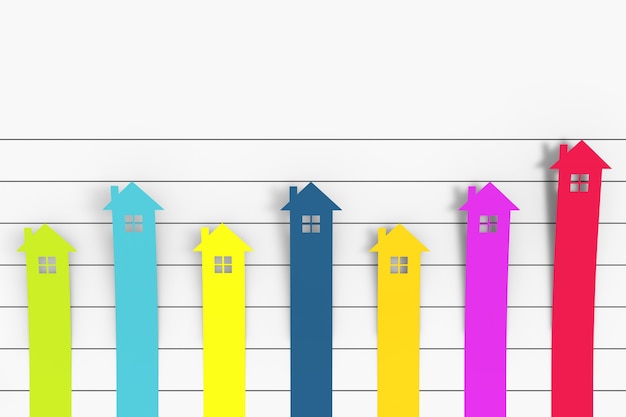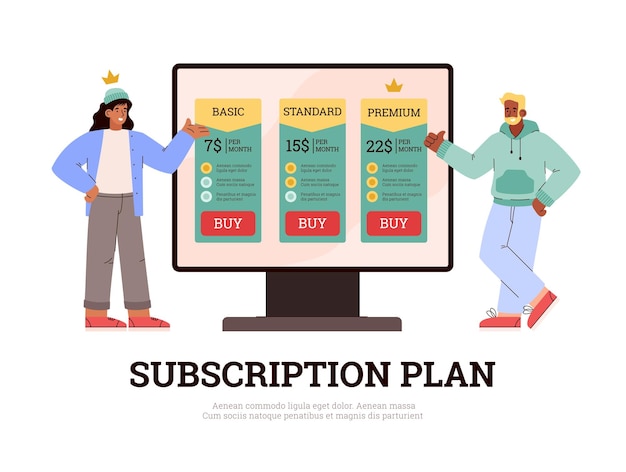Subscription Fatigue in 2025: Are Consumers Canceling Memberships?

Subscription fatigue refers to the burnout consumers experience from managing too many subscriptions; in 2025, increased awareness and economic pressures may lead to more cancellations as people reassess the value they receive from their numerous memberships.
Is subscription fatigue about to reach its peak? As we head into 2025, consumers are facing an overwhelming array of subscription services, leading many to question the value they’re truly getting. Are we on the verge of a mass cancellation event?
Understanding Subscription Fatigue
Subscription services have become ubiquitous, offering convenience and access to a wide range of content and services. However, the sheer number of options can lead to what is known as subscription fatigue. Let’s delve deeper into what this phenomenon entails and why it’s becoming increasingly prevalent.
What is Subscription Fatigue?
Subscription fatigue is the mental and financial exhaustion that consumers experience from managing multiple recurring subscriptions. It arises from the feeling of being overwhelmed by the number and cost of these services.
Key Drivers of Subscription Fatigue
Several factors contribute to the rise of subscription fatigue. Understanding these drivers is essential for businesses and consumers alike.
- Proliferation of Subscription Services: The explosion of streaming platforms, SaaS tools, and other subscription-based services has created a crowded market.
- Economic Pressures: Inflation and economic uncertainty are forcing consumers to re-evaluate their spending habits.
- Lack of Perceived Value: Consumers may feel they are not getting enough value from their subscriptions, leading to cancellations.
- Management Overload: Keeping track of multiple subscriptions, payment dates, and renewal terms can be cumbersome.
Subscription fatigue is not just about the money; it’s also about the mental effort required to manage these services. As consumers become more aware of their spending and the value they receive, they are more likely to cut back on subscriptions that don’t meet their needs.

In conclusion, subscription fatigue is a multifaceted issue driven by the abundance of subscription options, economic pressures, perceived lack of value, and the burden of managing multiple accounts. As we move closer to 2025, these factors are likely to intensify, influencing consumer behavior significantly.
The State of Subscriptions in 2024
Before we can predict what might happen in 2025, it’s crucial to understand the current landscape of subscription services in 2024. This includes analyzing the types of subscriptions that are most popular and how consumer behavior is evolving.
In 2024, subscription services continue to dominate various sectors, from entertainment to software. However, certain trends are becoming more pronounced.
Popular Subscription Categories in 2024
The subscription economy spans a wide array of categories, each with its unique appeal and market share.
- Streaming Services: Platforms like Netflix, Disney+, and Spotify continue to be popular, but are facing increased competition.
- Software as a Service (SaaS): Businesses rely heavily on SaaS tools such as Adobe Creative Cloud and Microsoft 365 for productivity and creativity.
- Subscription Boxes: These curated boxes, offering everything from beauty products to snacks, remain a niche but loyal market.
- News and Media: Digital subscriptions to newspapers and magazines are growing as traditional media outlets adapt to the digital age.
The popularity of these subscriptions reflects the changing ways consumers access content and services. However, this popularity also contributes to the growing sense of subscription fatigue.
Evolving Consumer Behavior
Consumer behavior is constantly evolving. Several key shifts are shaping the subscription landscape.
Consumers are becoming more discerning about the value they receive from their subscriptions. They are more likely to cancel services that they don’t use regularly or that don’t provide sufficient value.
The rise of subscription management tools and apps indicates that consumers are seeking ways to simplify and control their subscription spending.
More consumers are opting for free trials and promotional offers to test out services before committing to a long-term subscription.
In summary, the subscription market in 2024 is characterized by intense competition, evolving consumer preferences, and a growing need for value and convenience.
Predicting Subscription Cancellations in 2025
Looking ahead to 2025, several factors suggest that subscription cancellations could increase. Economic forecasts, market trends, and changing consumer attitudes all play a role in shaping this prediction.
Considering these factors, we can anticipate a potential surge in subscription cancellations in 2025. Here’s why:
Economic uncertainties, such as inflation and potential recessions, may force consumers to cut back on non-essential spending.
As more subscription options become available, consumers will face increased pressure to choose between them, leading to cancellations of less-valued services.
Consumers who have experienced subscription fatigue are more likely to proactively cancel subscriptions to simplify their lives and reduce financial burdens.
The Impact of Economic Factors
Economic conditions play a significant role in consumer spending habits. Economic downturns often lead to reduced discretionary spending and increased scrutiny of subscription costs.
High inflation rates may erode consumers’ purchasing power, making them more sensitive to the costs of subscription services.
Recessions or periods of economic stagnation can lead to job losses and reduced household incomes, further incentivizing subscription cancellations.
Economic factors are likely to be a major driver of subscription cancellations in 2025. Consumers will prioritize essential spending and cut back on subscriptions they deem non-essential.
Consumer Attitudes and Awareness
Changing consumer attitudes and increased awareness of subscription costs are also contributing to the potential for increased cancellations. Consumers are becoming more financially savvy and are actively seeking ways to save money.
The growing awareness of subscription fatigue is prompting consumers to re-evaluate their subscription portfolios and make informed decisions about which services to keep.

Consumers are better informed and more proactive in managing their subscriptions. This increased awareness is empowering them to make smarter choices and cancel services that don’t align with their needs and budget.
In conclusion, the convergence of economic factors, changing consumer attitudes, and increased awareness of subscription costs paints a clear picture: subscription cancellations are likely to rise in 2025. Businesses will need to adapt to this trend by providing greater value and improving customer retention strategies.
Strategies for Retaining Subscribers
In light of potential subscription cancellations in 2025, businesses need to focus on strategies to retain their existing subscribers. These strategies should aim to enhance customer value, improve user experience, and foster long-term loyalty.
To combat subscription fatigue and retain subscribers, businesses can implement several key strategies.
Enhance Customer Value
Providing exceptional value is the most effective way to keep subscribers engaged and satisfied.
Offer exclusive content, features, or discounts that are not available to non-subscribers.
Personalize the subscription experience by tailoring content and recommendations to individual preferences.
Regularly update the content and services offered to keep the subscription fresh and exciting.
Customers who perceive high value are more likely to remain subscribers, even in the face of economic pressures or subscription fatigue.
Improve User Experience
A seamless and enjoyable user experience can significantly improve customer satisfaction and retention.
Ensure easy navigation, intuitive interfaces, and fast loading times.
Provide excellent customer support and promptly address any issues or concerns.
Offer flexible subscription options, such as monthly, quarterly, or annual plans, to cater to different budgets and needs.
A positive user experience can create a stronger connection between the subscriber and the service, increasing loyalty and reducing the likelihood of cancellation.
Foster Long-Term Loyalty
Building long-term relationships with subscribers can help to foster loyalty and reduce churn.
Implement loyalty programs that reward subscribers for their continued patronage.
Engage with subscribers through social media, email newsletters, and other channels to build a sense of community.
Solicit feedback from subscribers and use it to improve the service and address their needs.
Loyal subscribers are more likely to stick with a service, even when faced with competing options or economic challenges.
In summary, retaining subscribers in 2025 will require a multi-faceted approach that focuses on enhancing customer value, improving user experience, and fostering long-term loyalty. Businesses that prioritize these strategies will be better positioned to weather the storm of subscription fatigue and maintain a strong subscriber base.
The Future of the Subscription Economy
Despite the potential for increased cancellations in 2025, the subscription economy is likely to remain a significant part of the consumer landscape. However, it will need to adapt to changing consumer preferences and economic realities.
The subscription economy is not going away, but rather evolving. Several trends are likely to shape its future.
Personalization and Customization
Consumers are increasingly seeking personalized and customized experiences. Subscription services that can cater to individual needs and preferences will have a competitive advantage.
AI-powered recommendation engines can analyze user data and suggest relevant content and services.
Flexible subscription models that allow users to choose specific features or content packages will become more popular.
Personalization and customization can increase the perceived value of a subscription, making it more likely to be retained.
Bundling and Partnerships
Bundling subscription services together can offer greater value and convenience for consumers.
Partnerships between different types of subscription services, such as streaming platforms and SaaS tools, can create attractive bundles.
Bundling can reduce the overall cost of subscriptions and make them more appealing to budget-conscious consumers.
By bundling services, businesses can create a more comprehensive and compelling offering, increasing subscriber retention.
Focus on Value and Transparency
Consumers are demanding greater value and transparency from their subscriptions. Businesses will need to be upfront about pricing, terms, and conditions.
Providing clear and concise information about the benefits of a subscription can help to justify its cost.
Offering flexible cancellation policies and easy-to-use subscription management tools can build trust and reduce frustration.
Transparency and value are essential for building long-term relationships with subscribers and reducing churn.
In conclusion, the future of the subscription economy will be shaped by personalization, bundling, and a focus on value and transparency. Businesses that can adapt to these trends will be well-positioned to thrive in the years to come.
Adapting to Changing Consumer Needs
To thrive in a dynamic market, subscription services must continuously adapt to evolving consumer needs and preferences. This involves staying informed about market trends, gathering customer feedback, and implementing innovative strategies to enhance the subscription experience.
Adapting to changing consumer needs is crucial for the survival and success of subscription services. Here are some key strategies.
Continuous Market Research
Conducting regular market research can help businesses stay abreast of emerging trends and consumer preferences.
Analyzing competitor strategies and identifying new opportunities can inform product development and marketing efforts.
Market research can provide valuable insights into what consumers want and how businesses can meet those needs.
Staying informed about market trends is essential for adapting to changing consumer needs.
Gathering Customer Feedback
Collecting feedback from subscribers can provide valuable insights into their experiences and expectations.
Surveys, focus groups, and online reviews can offer valuable data on customer satisfaction and areas for improvement.
Businesses should actively solicit and respond to customer feedback to demonstrate their commitment to meeting customer needs.
Customer feedback is a valuable resource for identifying and addressing pain points.
Implementing Innovative Strategies
Businesses should be open to experimenting with new strategies and technologies to enhance the subscription experience.
AI-powered personalization, dynamic pricing, and gamification can help to engage subscribers and increase retention.
Innovative strategies can help businesses to stand out from the competition and attract new subscribers.
Implementing innovative strategies is essential for adapting to changing consumer needs and staying ahead of the curve.
In summary, adapting to changing consumer needs is an ongoing process that requires continuous market research, customer feedback, and innovative strategies. Businesses that prioritize these efforts will be well-positioned to succeed in the evolving subscription economy.
| Key Point | Brief Description |
|---|---|
| 📉 Subscription Fatigue | Consumers feel overwhelmed by managing multiple subscriptions. |
| 💰 Economic Factors | Inflation and recessions may lead to subscription cancellations. |
| ✨ Customer Value | Enhancing value can help to retain subscribers. |
| 🔮 Future Trends | Personalization and bundling will shape the subscription economy. |
FAQ
▼
Subscription fatigue refers to the mental and financial exhaustion experienced by consumers managing numerous recurring subscriptions. It often results from the feeling of being overwhelmed by the costs and responsibilities involved.
▼
Several factors contribute to this expectation, including economic uncertainties like inflation, increased competition among subscription services, and growing consumer awareness of subscription costs leading to more critical evaluation.
▼
Businesses can retain subscribers by enhancing customer value through exclusive content, improving user experience with intuitive interfaces, and fostering long-term loyalty programs that engage consumers and reward continued patronage.
▼
Personalization is crucial, offering customized experiences tailored to individual preferences. AI-driven recommendations and flexible subscription models will enhance user engagement and increase the perceived value, leading to better retention.
▼
Economic downturns, inflation, and recessions can significantly influence subscription cancellations. Consumers often cut back on non-essential spending during such times, scrutinizing subscription costs and canceling those deemed less valuable.
Conclusion
In conclusion, subscription fatigue is a growing concern that businesses must address to maintain a loyal customer base. By focusing on enhancing customer value, improving the user experience, and adapting to changing consumer needs, companies can navigate the challenges ahead and thrive in the subscription economy.
